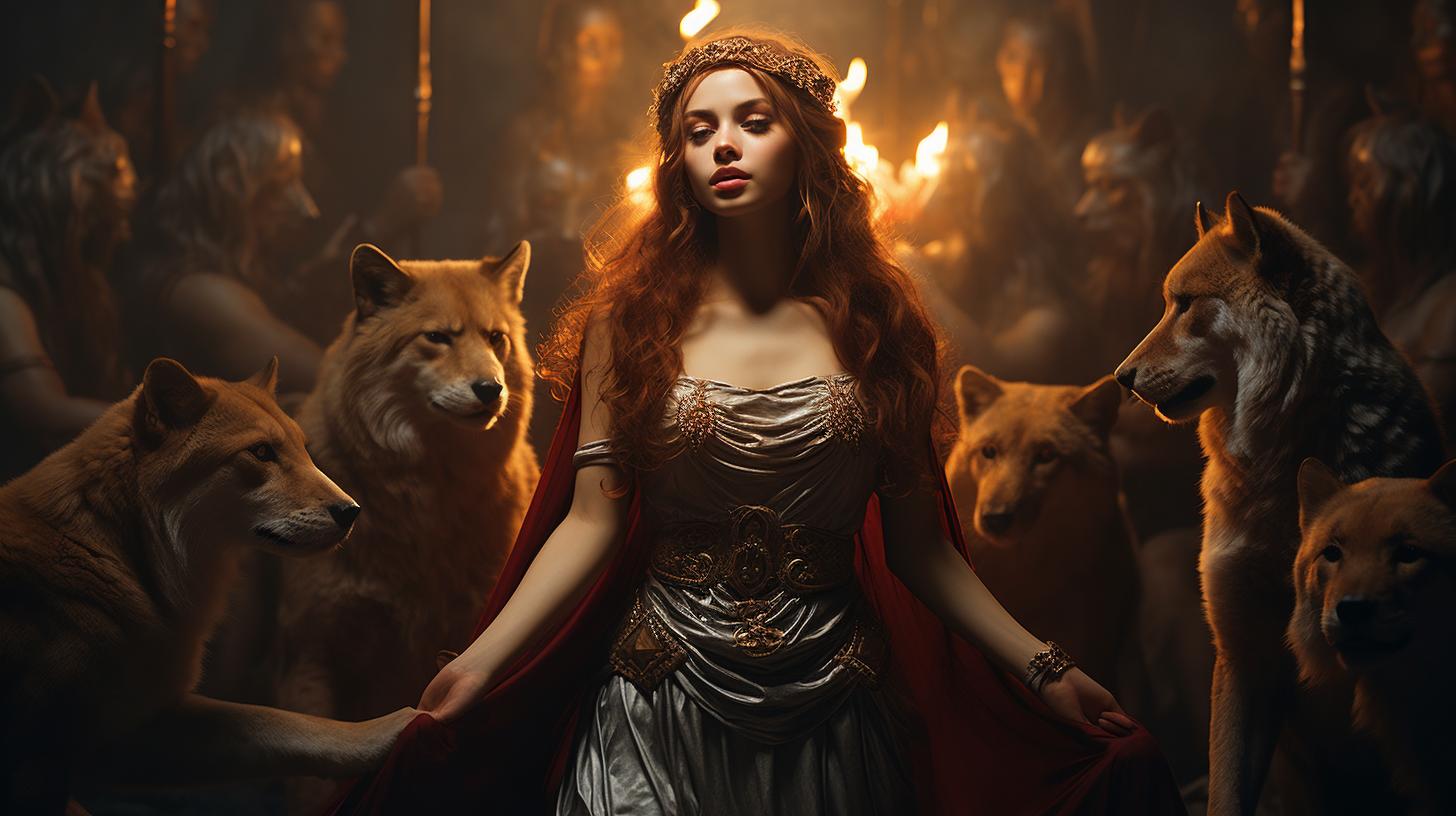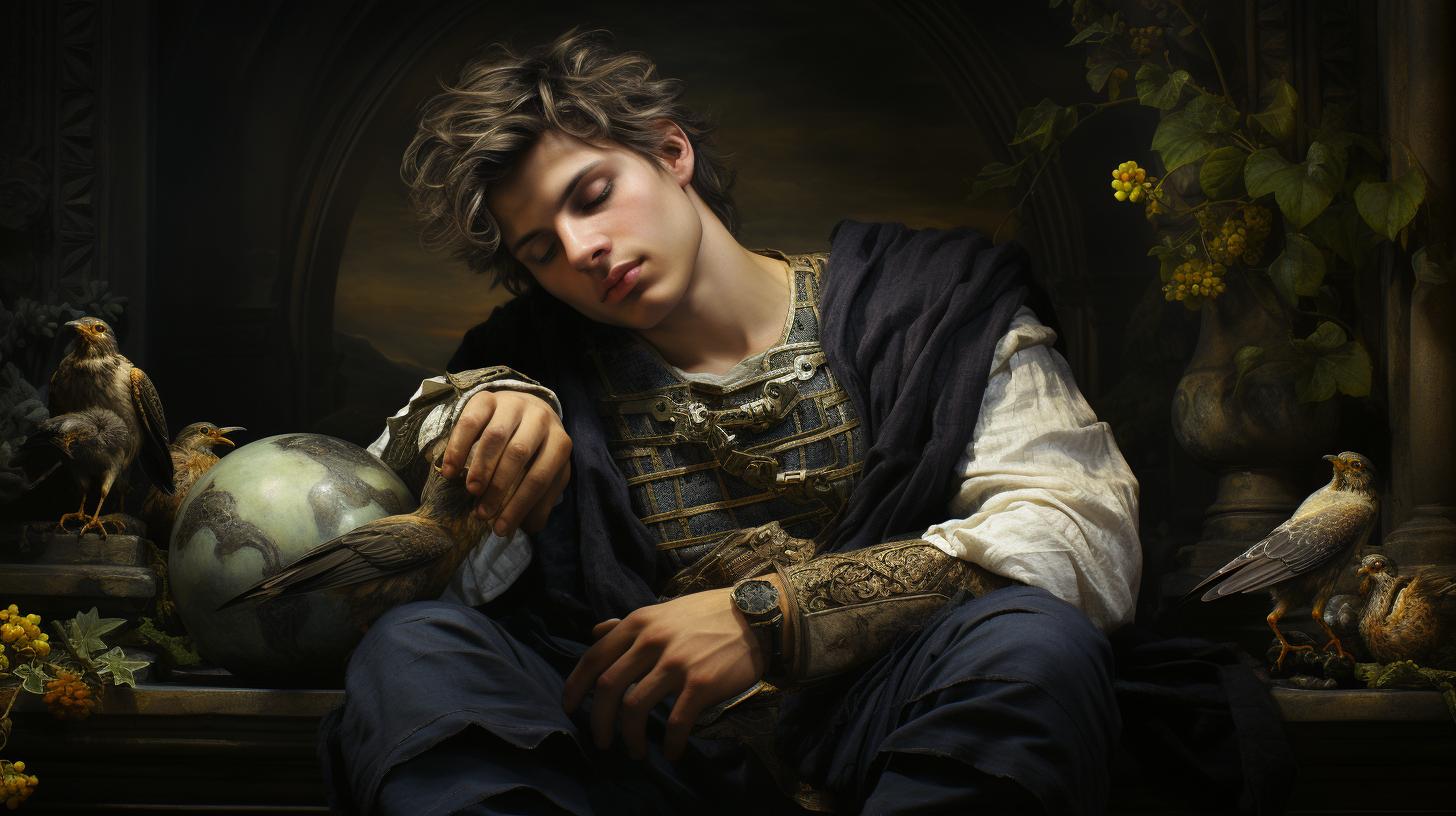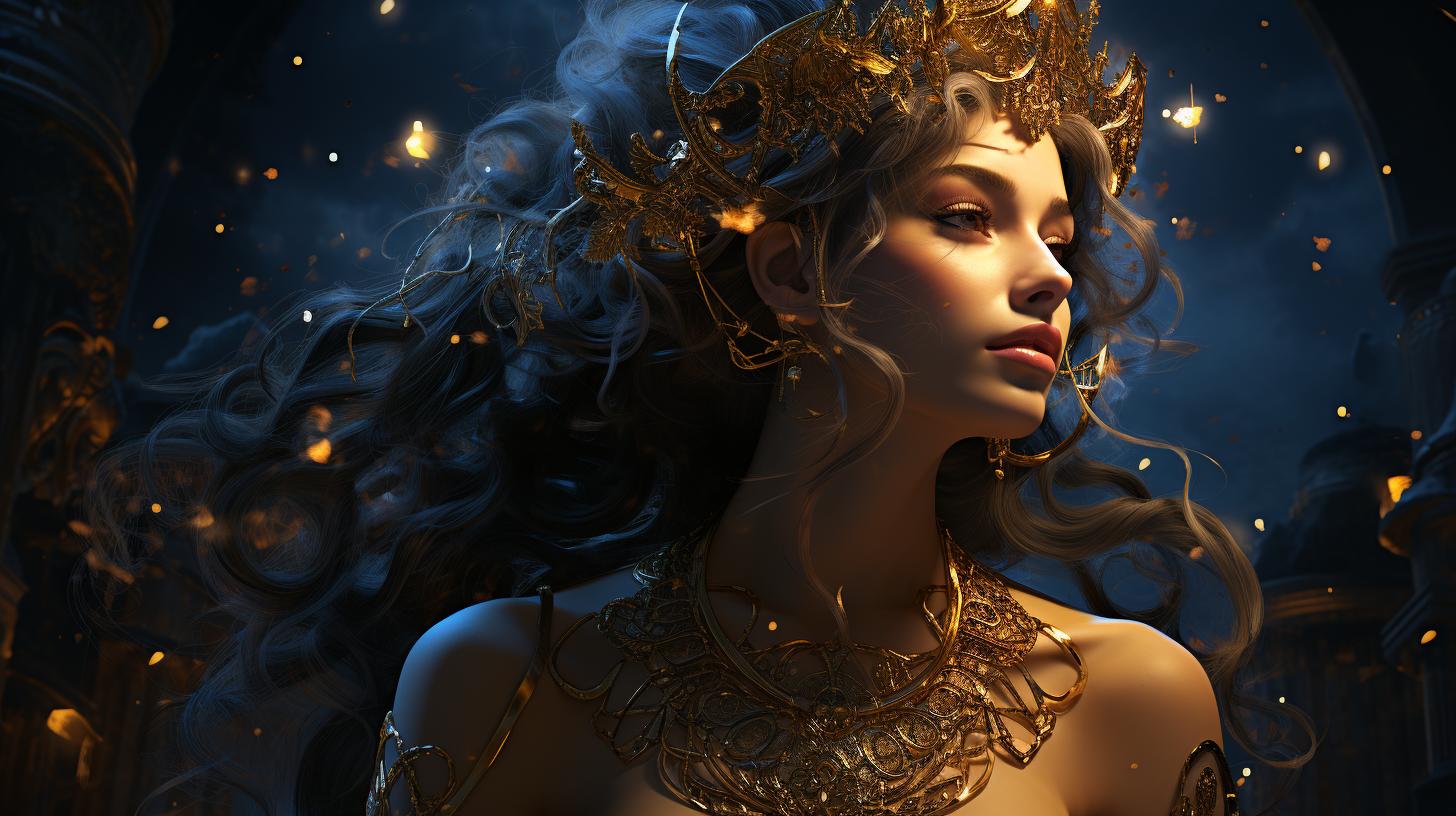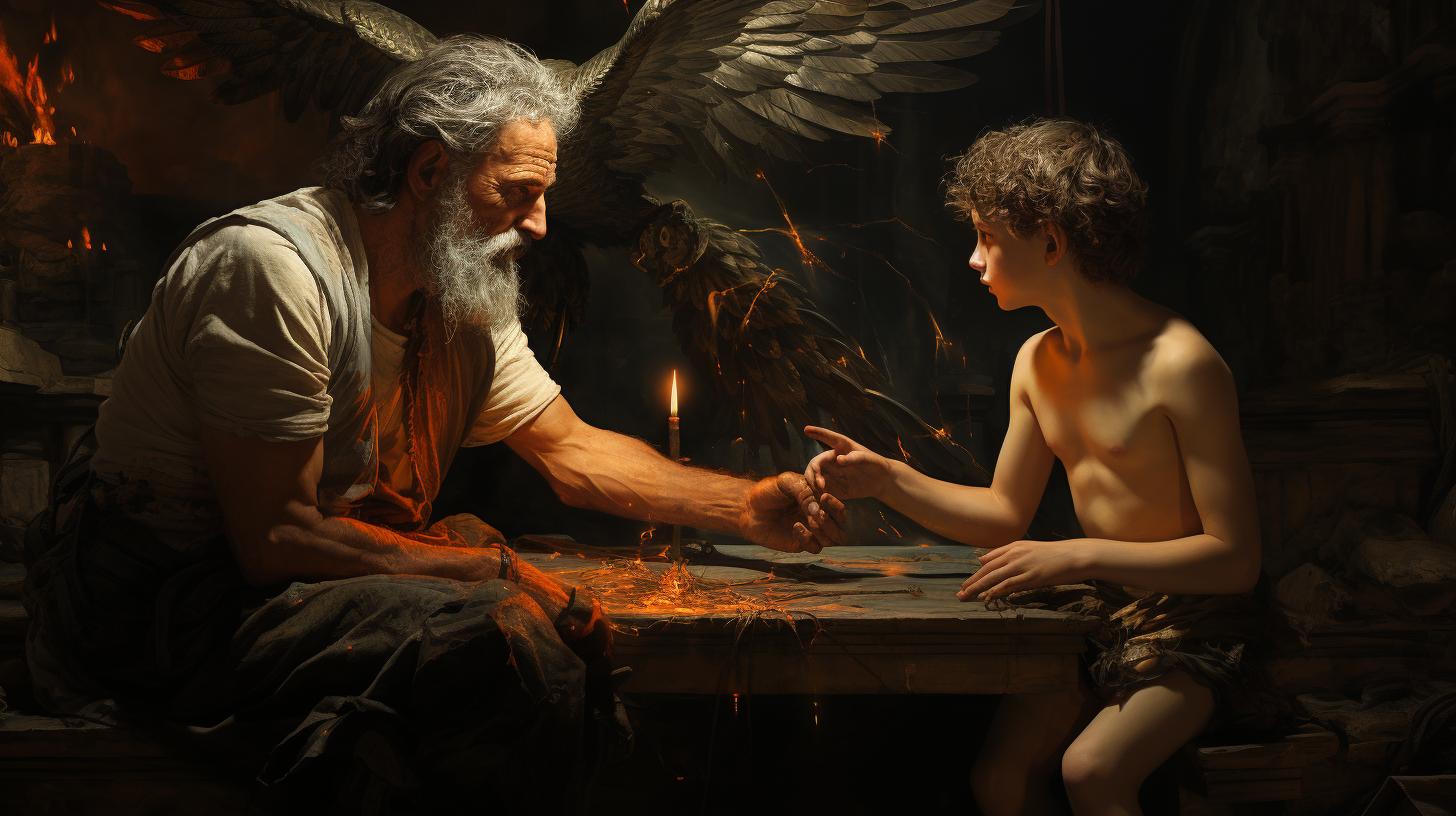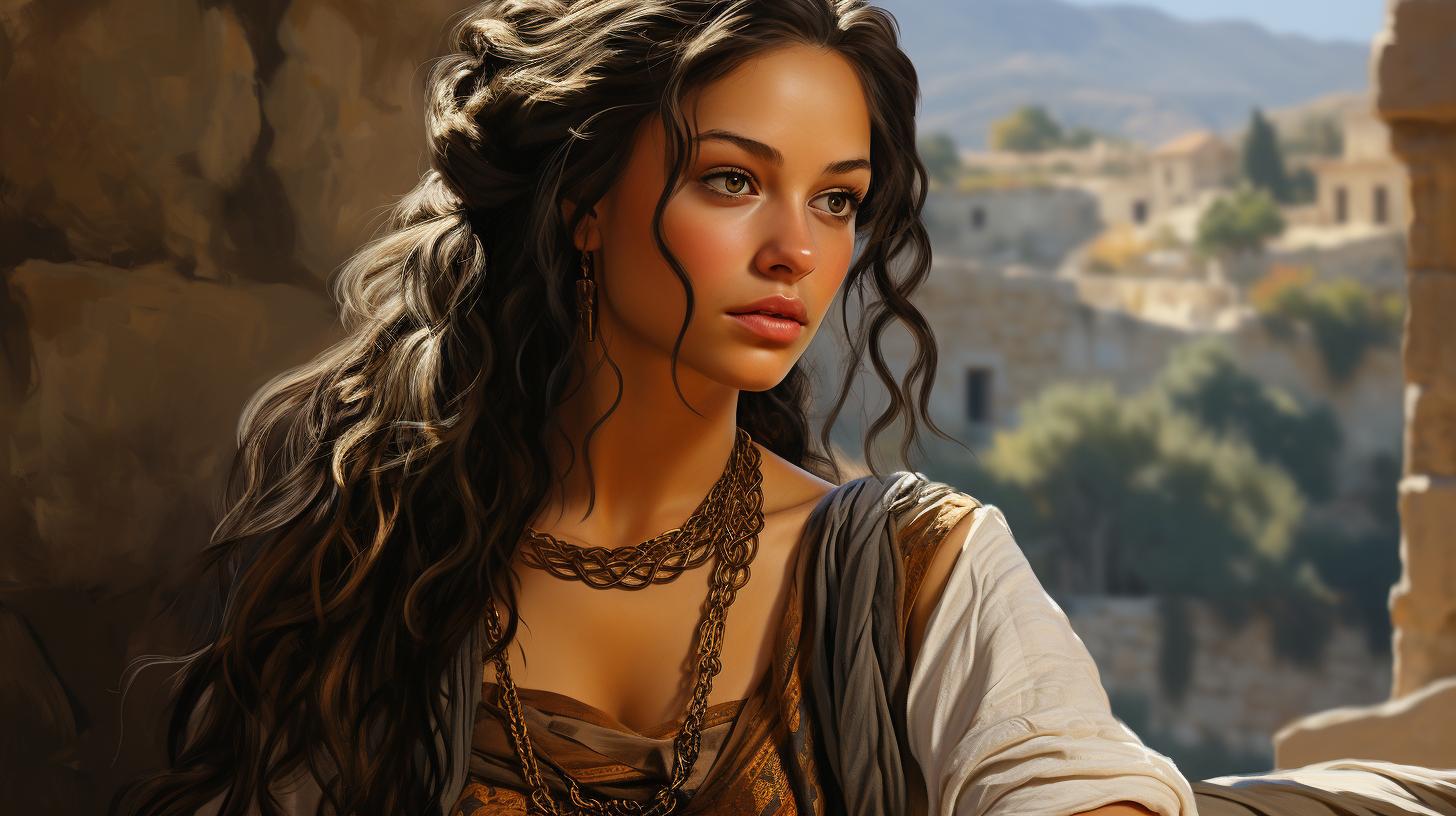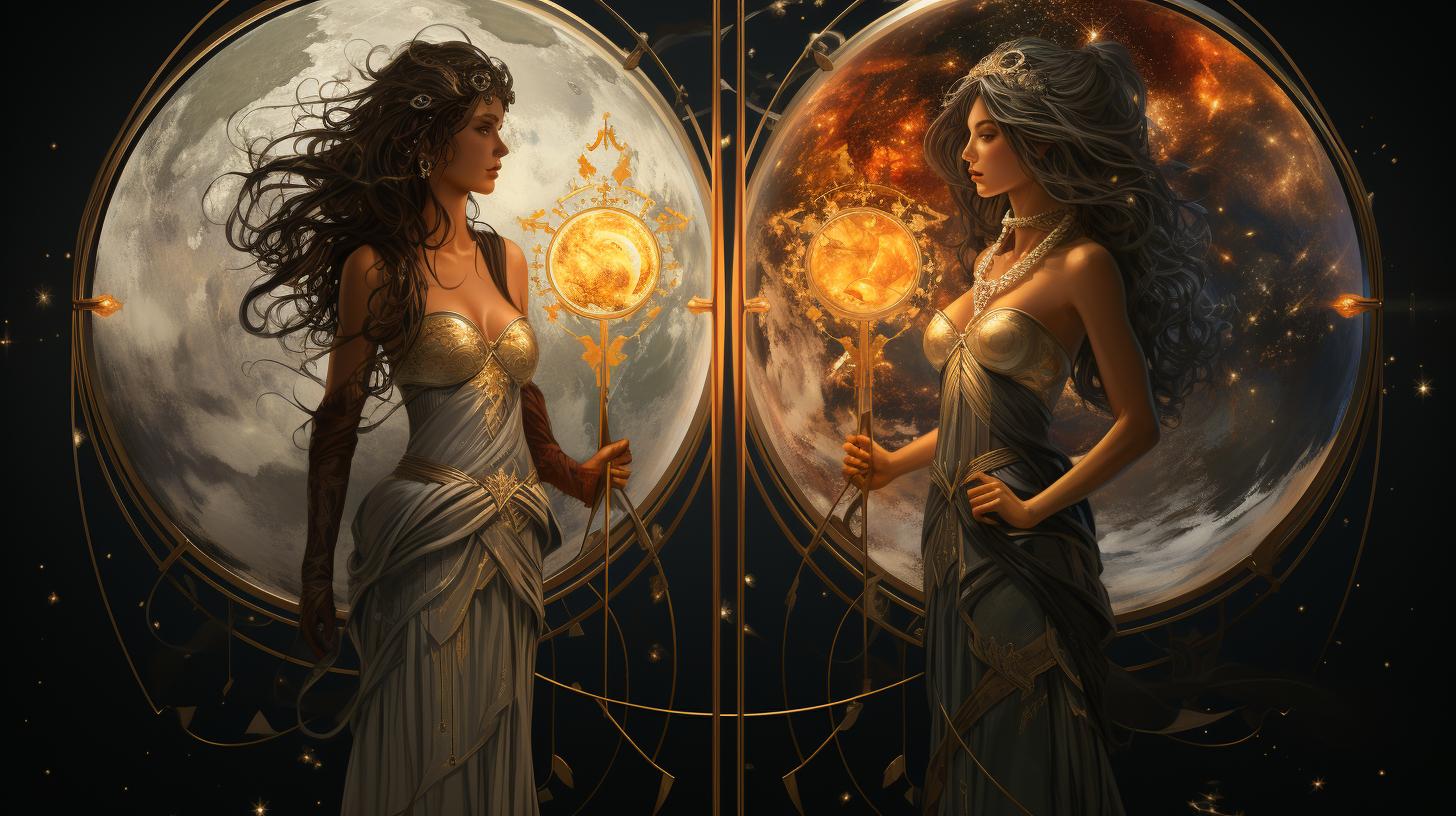Greek Goddess Circe: The Enchantress of Aeaea
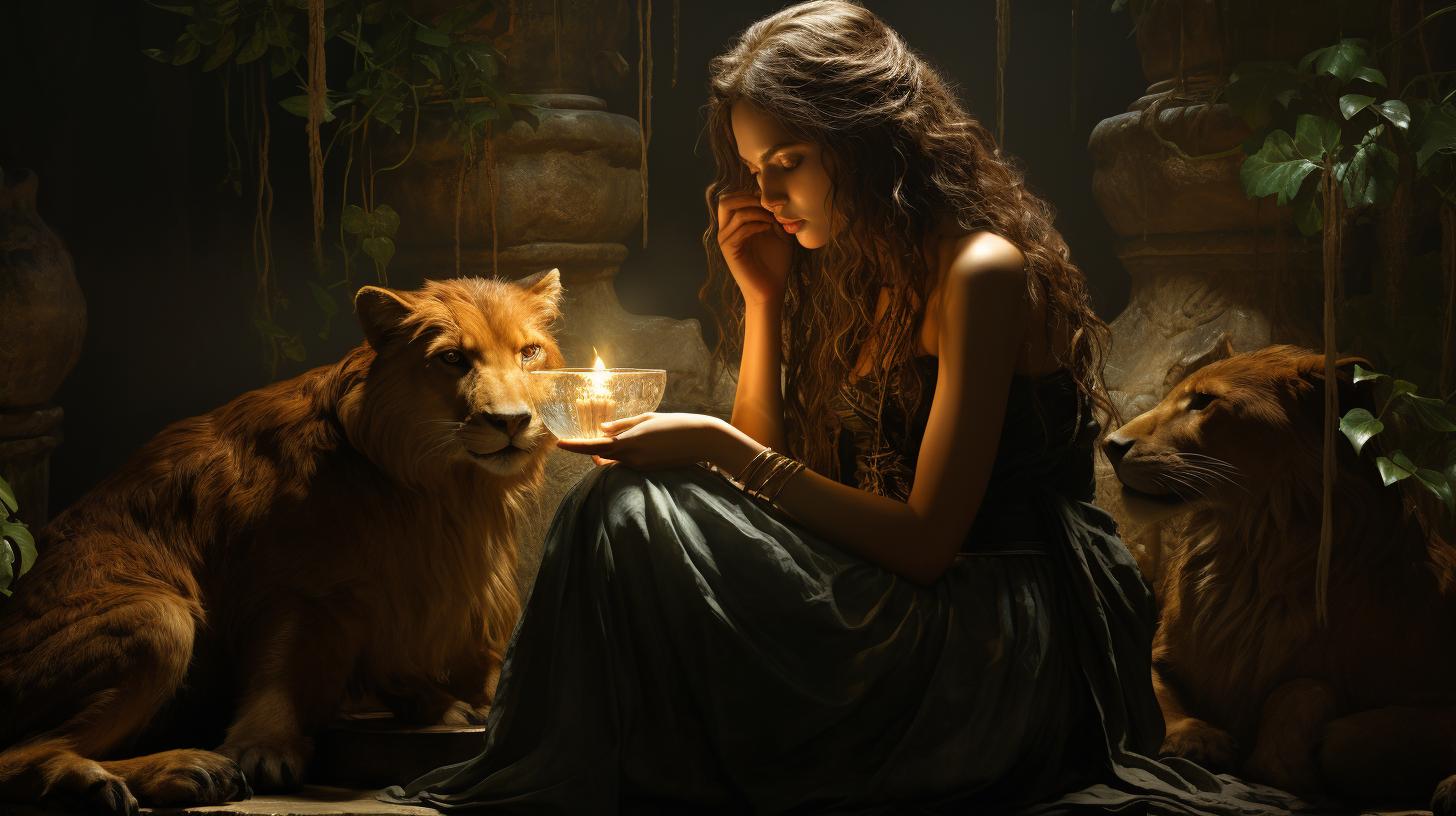
Greek goddess Circe, known for her enchanting powers and ability to transform humans into animals, holds a prominent place in ancient Greek mythology. Born as the daughter of Helios and Perse, Circe resided on the bewitching island of Aeaea.
Her encounter with the hero Odysseus and the subsequent transformations of his crew are among her well-known tales. Circe’s relationships and offspring, such as Telegonus and Latinus, further contribute to her intriguing narrative.
Additionally, her vengeful actions against the nymph Scylla demonstrate the power and complexity of this fascinating goddess. Explore the mythology and legacy of Circe, delving into her significance in Greek culture and her enduring influence in literature, art, and popular culture.
The Mythology of Circe in Ancient Greece
The ancient mythology of Circe encompasses fascinating tales of captivating enchantments and extraordinary powers. Delve into the origins of this enigmatic Greek goddess, as well as the intriguing accounts of her island, transformative encounters, relationships, and acts of revenge.
The Origins of Circe: Daughter of Helios and Perse
Circe, born to the divine union of Helios, the sun god, and Perse, a nymph, emerged as a formidable enchantress. Her lineage and family ties contribute to her exceptional abilities and establish her noteworthy position among the gods and goddesses of Greek mythology.
Circe’s Divine Lineage and Family
As the daughter of Helios and Perse, Circe shares her heritage with siblings Aeetes and Perses. This divine lineage grants her immense power and sets the stage for her role as a significant presence in Greek mythology.
The Powers and Abilities of Circe
Circe’s exceptional talent lies in her proficiency with magical herbs and concoctions, enabling her to manipulate and transform individuals. Her unparalleled abilities are said to have both punished her enemies and exacted revenge on those who dared to offend her.
Circe’s Island of Aeaea: A Haven for Witchcraft
Aeaea, the enchanting island ruled by Circe, serves as the backdrop for her mystical prowess. Explore this secluded realm brimming with magical flora and fauna, and discover the bewitching ambiance that surrounded Circe in her abode.
Exploring the Enchanted Isle of Aeaea
A journey to Aeaea unravels a world of enchantment and spellbinding beauty. Immerse yourself in the ethereal landscapes, vibrant colors, and intoxicating fragrances that infused Circe’s domain, as described in ancient mythological accounts.
The Creatures and Surroundings of Aeaea
Aeaea’s landscape teems with transformed creatures, once men, now lions and wolves, serving as a visual reminder of Circe’s extraordinary powers. Engage with the fascinating beings and explore the rich tapestry of the island that played a crucial role in Circe’s mythology.
The Encounter with Odysseus: Transformation and Triumph
One of the most renowned episodes involving Circe is her encounter with the Greek hero Odysseus. Unravel the intricacies of this captivating tale, including the transformation of Odysseus’ crew, his resilience, and his eventual triumph over the enchantress.
Odysseus and His Companions Arrive at Aeaea
Odysseus and his crew find themselves on the shores of Aeaea, seeking shelter and provisions. This marks the beginning of a fateful meeting with Circe, leading to transformative events that will test their wits and perseverance.
Circe’s Transformation of Odysseus’ Men
Through her potent brew of cheese, barley, honey, wine, and magical herbs, Circe unleashes her power, turning Odysseus’ men into swine. Explore the significance of this transformation and its impact on Odysseus’ journey.
Odysseus’ Resilience and the Restoration of His Crew
Protected by the magical herb given by Hermes, Odysseus manages to resist Circe’s enchantments and devises a plan to restore his crew to their human forms. Witness his cunning and resourcefulness as he outwits the enchantress and secures their freedom.
Odysseus’ Time on Aeaea and Departure
After the transformative encounters on Aeaea, Odysseus spends a year under Circe’s roof, studying her arts and healing his crew. Delve into the details of Odysseus’ time on the island and his eventual departure to continue his epic journey home.
Circe’s Relationships and Offspring
Uncover the captivating romantic entanglements of Circe, including her notable relationship with Odysseus. Delve into the tales of their offspring, Telegonus and Latinus, as well as other romantic ties associated with the enchantress of Aeaea.
Circe and Odysseus: Love and Legacy
The complex relationship between Circe and Odysseus leads to lasting consequences and a shared legacy. Explore the dynamics of their love affair and the impact it has on the mythological narrative surrounding both characters.
Other Romantic Tales of Circe
Beyond her relationship with Odysseus, Circe’s allure extends to other gods and heroes. Discover the intriguing stories of her romantic encounters and the influence these interactions have on her mythological character.
Circe’s Vengeance: The Transformation of Scylla
Witness the depth of Circe’s emotions, her unrequited love, and the vengeful act that leads to the tragic transformation of Scylla, a once-beautiful nymph turned into a horrifying sea monster. Unravel the gripping tale of betrayal and punishment that forever alters both Circe and Scylla.
Circe’s Unrequited Love and Jealousy
Circe’s unrequited love for the sea god Glauco spurs feelings of jealousy when he favors the nymph Scylla. Delve into the emotional turmoil that drives Circe to enact a cruel and irreversible revenge upon her romantic rival.
The Tragic Transformation of Scylla
Explore the shocking consequences of Circe’s actions as she unleashes her dark magic, transforming Scylla into a fearsome creature with a terrifying appearance. Witness the tragic outcome of this tale of love, jealousy, and vengeance.
The Role of Circe in Greek Mythology
The ancient Greek goddess Circe played a significant role in Greek mythology, with her stories capturing the imagination of many. Let’s delve into the different aspects that highlight her importance in ancient Greek culture.
The Significance of Circe in Ancient Greek Culture
Circe held great significance in ancient Greek culture, not only as a powerful deity but also as a symbol of transformation and enchantment. Her ability to turn humans into animals symbolized the dangers of temptation and the consequences of succumbing to one’s desires.
Circe’s story served as a cautionary tale, reminding individuals to exercise caution and self-restraint.
Furthermore, Circe was associated with witchcraft and herbalism, making her a representation of the mystical and magical world that existed beyond the realms of ordinary human existence.
Her knowledge of powerful herbs and potions added to her allure and mystique.
Circe’s Influence on Heroes and Legends
Circe’s encounters with various heroes and legends played a significant role in shaping their journeys and fates. Her transformation of Odysseus’ crew during their visit to Aeaea tested Odysseus’ leadership and resilience, showcasing the challenges heroes often face on their quests.
By restoring his crew to human form, Circe not only demonstrated her power but also aided Odysseus in his eventual return home.
Beyond Odysseus, Circe’s involvement with other prominent figures is also noteworthy.
Her romantic entanglements with gods and heroes, such as Glauco and Telemachus, added complexity to her character and further emphasized her influence on the lives of those she encountered.
The Symbolism and Themes Associated with Circe
Circe’s story is rich with symbolism and themes that resonate with human experiences.
Her transformation abilities symbolize the power of change and the potential for personal growth. The idea of being lured by illusions and the need for self-awareness and self-control are universal themes found within Circe’s narrative.
Additionally, Circe represents the blurred line between good and evil, as her actions are driven by a mixture of love, resentment, and desire for revenge. This ambiguity highlights the complexities of human nature and the gray areas present in ethical decision-making.
Exploring these themes and symbolism associated with Circe provides valuable insights into the human condition and the moral dilemmas individuals face in their own lives.
- Circe’s significance in ancient Greek culture
- Influence on heroes and legends
- Symbolism and themes associated with Circe
Circe’s Legacy and Modern Interpretations
Circe, the enchanting Greek goddess, continues to captivate and inspire in various forms of artistic expression and popular culture today.
Her timeless story and multifaceted character have found their place in literature, art, and even in contemporary interpretations. This section explores Circe’s enduring legacy and her significance in the modern world.
Circe in Literature, Art, and Popular Culture
Circe’s enchanting tale has been a subject of fascination for numerous writers, artists, and creators across the ages. She has served as a powerful muse for literary works, allowing authors to delve into themes of magic, transformation, and female power.
- The Odyssey by Homer: Circe’s role in Homer’s epic has solidified her status as a captivating figure. Her encounters with Odysseus and her bewitching abilities have been retold and reimagined by various authors.
- Circe by Madeline Miller: Miller’s novel breathes new life into Circe’s story, offering a fresh perspective and delving into her motivations and emotions.
The book has gained critical acclaim and introduced a new generation to the captivating goddess.
- Artistic Depictions: Throughout history, artists have depicted Circe’s beauty and power in stunning works of art.
Paintings, sculptures, and illustrations continue to enchant viewers with their interpretations of the goddess.
- Modern Adaptations: Circe’s allure transcends traditional mediums, as her story has been adapted into plays, films, and even video games.
These adaptations allow audiences to experience Circe’s world in new and immersive ways.
The Relevance of Circe’s Story in Today’s World
While Circe’s story originates from ancient Greece, its relevance resonates in the present day. Themes of empowerment, identity, and the complexity of humanity continue to be explored through her character.
- Feminine Power: Circe’s embodiment of female power has made her an icon of empowerment for many.
Her ability to control her own fate and assert her autonomy echoes the ongoing pursuit of gender equality.
- Self-Discovery and Transformation: Circe’s journey of self-discovery and transformation inspires individuals to embrace their true selves, overcome obstacles, and forge their own paths in life.
- Moral Ambiguity: Circe’s morally complex nature challenges traditional notions of good and evil.
She reminds us of the intricacies of human nature and the blurred lines between heroism and villainy.
Discovering Circe: Sources and Further Reading
For those eager to delve deeper into the captivating world of Circe, there are numerous sources and recommended readings available. These texts provide additional insights into her mythology, literary interpretations, and scholarly discussions.
- “Circe” by Madeline Miller
- “The Odyssey” by Homer
- “Circe: The Goddess Who Reveals the Hero’s Journey” by Gareth Knight
- “The Greek Myths” by Robert Graves
- “Goddesses in Everywoman: Thirteen Powerful Archetypes in Women’s Lives” by Jean Shinoda Bolen
Exploring these sources will enhance your understanding and appreciation of Circe’s legacy, allowing you to immerse yourself in her captivating world.
.

